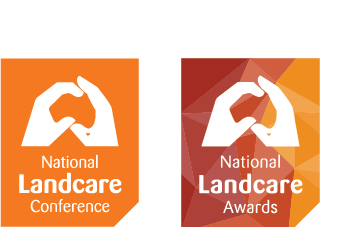
2018 NATIONAL LANDCARE CONFERENCE “Building a better tomorrow”
This is a report about the 2018 National Landcare Conference that was prepared by committee member John Dalton who attended the National Landcare Conference in the place of our coordinator Marita Sydes who was unable to make the conference.
The conference was held in the Brisbane Conference & Exhibition Center at Southbank 11 and 12 October with a preceding day of field trips.
John, representing Marita, participated in the Warril Creek/Boonah field trip “Log Jams and Local Food: Innovations in river restoration and horticulture” in the Bremmer river catchment southwest of Ipswitch to witness river restoration funded by Qld Govt to reduce sediment in the Brisbane River and sustainable industrial vegetable production by KalFresh.
Pip Courtney was the Conference MC, and welcome address by Hon Major General Michael Jeffrey, national soils advocate and chair of ‘Soils for Life” (see the website, including 30 case studies). He stressed the importance of the catchment approach and integrated management of soils, water and plants as the foundation of regenerative agriculture. He noted the historical collaboration of farmers and Landcare, that farmers care for 60% of the landscape and should be rewarded for their extensive success and ongoing work in landscape regeneration.
The Conference program was very intensive with four concurrent sessions organised under covering Sustainable Agriculture, Community in Action, Partnerships and Environment.
Day 1: An opening keynote “Towards a Climate Change Strategy for Landcare” by Professor Mark Howden on the PCCI. Prof Howden noted that Australia is defined by climate and vice versa, and needs to reduce emissions by 30-40% by 2030. He advocated learning strategies of anticipatory governance and transformative adaptation.
The National Landcare Awards Dinner on Thursday night was a huge event and inspiring awardees.. In a brief opening address, Minister Littleproud was very supportive and grateful for the work of Landcarers. However, Pip Courtney subsequently noted the “evident discontinuity: the pollies are praising but also de-funding”
Day 2: Plenary: Learning from 1788: Water, grass, salt, trees and fire in which Emeritus professor Bill Gammage (author of “The Biggest Estate on Earth”) wove a fascinating account of Aboriginal sustainable land management practices prior colonisation, particularly the strategic use of fire and no fire, to maintain open grasslands. His work complements Bruce Pascoe’s “Dark Emu”
A panel session Women in Landcare of leading Landcare women discussed their success in overcoming the unconscious bias, seeking our key women and their advice to improve women's roles and ensure all voices are heard. While Landcare has tended to be gender neutral most committees are predominantly male
There were numerous reports of studies showing the cost/benefits of investments in Landcare. A recent study by Aurecon of Landcare NSW coordinator project that fielded 71 part-time coordinators to build connection and capacity in communities was shown to return $6 for each $1 invested, while a more comprehensive study of investments in Landcare in Tasmania showed a 16: I benefit/cost ratio!
Intrepid Landcare (initiated by Naomi Watts) and run by dynamic younger women was a feature of the Conference. It was clearly engaging and mobilising both rural and urban youth in Landcare through activities that appeal.
From my ‘behind the scenes’ discussion with key representatives of state bodies, the long-sought objective of amalgamating the National Landcare Network (NLN) and Landcare Australia Ltd (LAL) into a unified voice for Landcare is an ongoing process and continuing drama. The central issue is the assurance the outcome maintains the central focus on community Landcare. As Sonia Williams noted: “Landcare is a process that supports communities to adapt and adopt. Landcare is not another name for NRM”.





